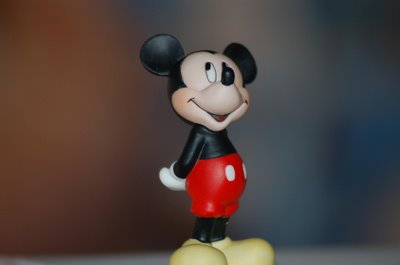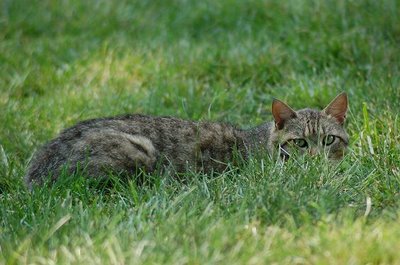Bokeh
 Bokeh Mickey
Bokeh Mickey
Although difficult to quantify, and hence open to debate, some lenses are believed to enhance overall image quality by producing more subjectively pleasing out-of-focus areas (bokeh). Bokeh is especially important for large-aperture lenses, macro lenses, and long telephoto lenses because they are typically used with a narrow depth of field. Bokeh is also important for "portrait lenses" (typically medium telephoto — 85–150 mm on 35-mm format) because the photographer would typically select a shallow depth of field (wide aperture) to have an out of focus background and make the subject stand out.
Some more example of Bokeh:
Bokeh effect can be achieved using narrow depth of field (wide aperture) .
The wider the aperture is (for similar focal length), the narrower of the depth of field will be (i.e. the area in focus will be narrower)

Bokeh Plant
Notice that you can blur both the front and the back of the main object.

Bokeh Cat
My favorite lens for creating Bokeh picture is the Nikon 50mm f/1.8D AF (prime lens).
I also often use the Nikon 70-300mm telephoto lens to create Bokeh pictures

Bokeh Plant 2
Other Nikon lens that produces great bokeh pictures: Nikon 80-200mm f/2.8 and Nikon 70-200mm f/2.8 VR
Technical definition of Bokeh is taken from wikipedia website.
© Sidarta Tanu


0 Comments:
Post a Comment
Subscribe to Post Comments [Atom]
<< Home